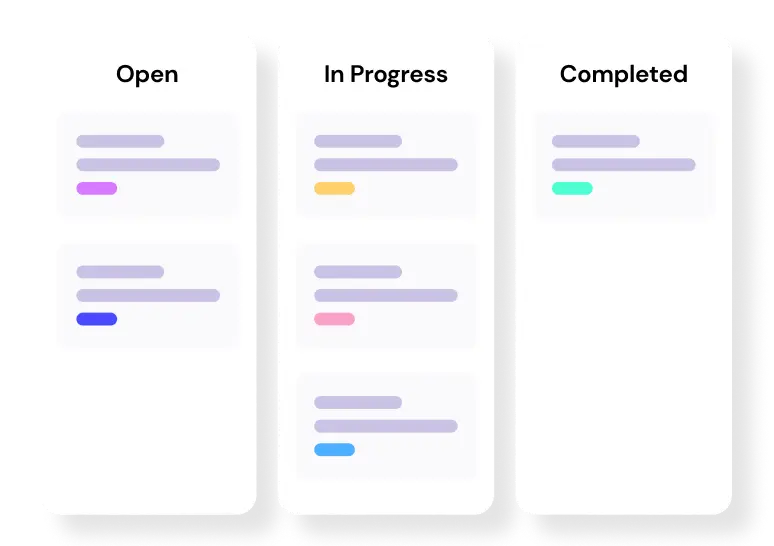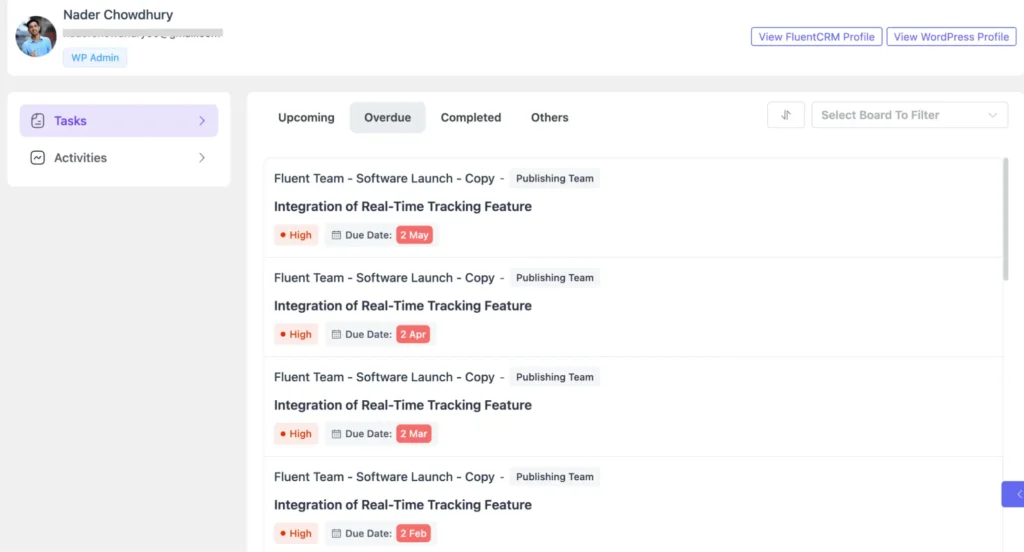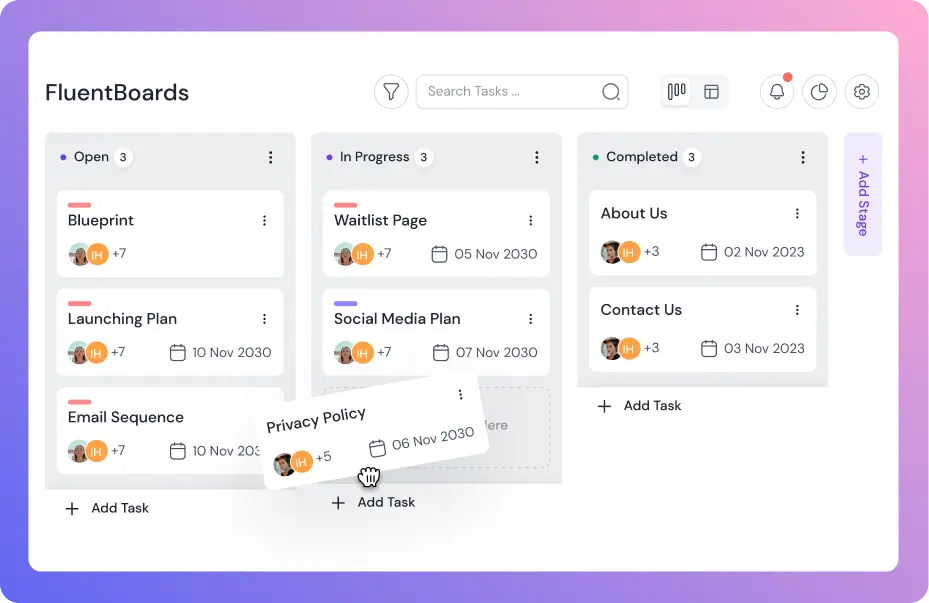
9 Essential Project Management Goals You Should Prioritize in 2025
As we step into 2025, the field of project management is adapting to new technologies, the evolving needs of organizations, and rising demands for efficiency and innovation.
In the face of these shifts, it’s more important than ever for project managers to step back, check their direction, and adjust their project management goals.
And to succeed in this dynamic environment, goals must be refined continuously.
That means:
- Learning from past challenges
- Setting clear, actionable goals
- Prioritizing what truly drives impact
- Maximizing team efficiency and collaboration
In this blog, we’ll explore essential project management goals you should prioritize to stay focused and improve both efficiency and successful project execution.
Let’s dive in!
Why Should You Set Project Management Goals?
Project management goals act as a roadmap, aligning the team and stakeholders on what to achieve and why.
They provide direction and clarity, ensuring that you and your team work with purpose instead of just reacting to problems
Zig Ziglar captured it best: ‘A goal properly set is halfway reached.’
Without clear goals from the start, your project could suffer from a lack of direction, scope creep, and ultimately fail to deliver the desired outcome.
On the other hand, with clear goals set, you can:
- Know exactly what “success” looks like from the start
- Identify potential project challenges and address them accordingly
- Ensure everyone understands their roles and responsibilities
- Easily track progress and adapt strategies as needed
- Adapt to changing trends, keeping your project relevant and competitive
- Motivate the team by setting achievable milestones
However, we have to keep in mind that setting goals isn’t just a bureaucratic step, nor should we do it for the sake of it.
In fact, the effectiveness of project management goals largely depends on how well we understand our project’s needs and whether we’re prioritizing the right goals to meet those needs
You also read: Why Project Management is Important?
9 Essential Project Management Goals for Project Success
Here are some key project management goals you should prioritize to stay focused, aligned, and on track for success –
Quick Tip: Before setting your project management goals, make sure you understand the differences between project goals and objectives. They may sound similar, but they serve different purposes!
Deliver projects on time
In project management, a core goal is to ensure timely delivery, which reflects strong planning, team accountability, and coordination. This builds stakeholder trust and enhances the organization’s reputation.
However, achieving this goal can be challenging! As the stat shows, only 34% of projects are delivered on time! And the delays can arise from:
- Unclear task dependencies
- Shifting priorities
- Unrealistic timelines

That’s why, to align with project goals, timely delivery requires progress tracking, adjustments, and strategies like:
- Break the project into clear, manageable phases
- Set realistic timelines based on available resources
- Prioritize tasks that directly impact deadlines, focusing on dependencies
- Regularly monitor progress and adjust plans as needed
Stick to the budget
Staying within your project’s budget is another project management goal that should be your top priority!
Only 34% of organizations can keep their projects on budget!
When costs are out of control, from timelines to project team performance, it affects everything.
And, to stay in control, keep an eye on the major cost areas:
- Staffing: Usually, the largest expense on any project
- Materials: Which shift depends on your project needs
- Operational costs: Like tools, subscriptions, and ongoing services
However, setting a project budget isn’t just about listing expenses. You also need to watch for scope creep and avoid unexpected cost hikes.
So, how do you stay on track?
- Plan a detailed budget that covers all possible expenses
- Track expenses regularly using real-time financial tools.
- Apply smart cost strategies to reduce spend without compromising quality.
Improve team collaboration and communication
Effective project execution depends heavily on how well your team communicates and collaborates.
To stay at the top of your project management game, make sure your communication is clear, concise, and purposeful.
And, you can improve it by implementing practical strategies, including:
- Use project management collaboration tools to keep updates and conversations in one place
- Hold regular meetings to review progress, address challenges, and stay aligned
- Encourage open communication so team members feel comfortable sharing ideas, concerns, and challenges
- Review past projects and challenges to trace where miscommunication started and avoid repeating mistakes
- Create a clear communication plan that everyone can follow and revisit when needed

Every Project Collaboration Features at Your Fingertips!
Manage risks early
Effective risk management is vital for the success of any project, especially in today’s unpredictable business landscape.
And if you fail to identify potential risks early, they could set you back more than you ever imagined!
That’s why, as a project manager, you should treat risk management as a top priority. You need to be proactive in building resilience and identifying risks early to prevent escalation, saving time, resources, morale, and momentum.
Here’s how to stay proactive to mitigate risks in advance:
- Conduct a risk assessment at the start of the project
- Brainstorm possible roadblocks with your team
- Categorize risks by likelihood and impact
- Develop mitigation plans in the planning stage, and adjust plans as necessary
- Monitor and review risks regularly throughout the project lifecycle
Meet stakeholder expectations
According to HubSpot, 78% of projects succeed when stakeholders are actively engaged, compared to just 40% when engagement is low.
In other words, keeping stakeholders involved nearly doubles the chances of success!
So, if you want your project to succeed, make sure every stakeholder is aligned and informed at every step.
However, achieving this can be challenging, particularly when:
- Stakeholders are not clear about project goals and objectives
- You aren’t using a tool that facilitates real-time communication
- Feedback loops are unclear or inconsistent
And, to overcome these challenges, you can follow these best practices to boost stakeholder engagement:
- Identify key stakeholders early to understand their influence and expectations, and secure their support
- Document project goals and objectives clearly and ensure they are easily accessible to everyone involved
- Clearly define your project workflow to ensure everyone understands how the project will progress and what needs to be achieved within a specific timeframe
- Communicate regularly during milestones, changes, and challenges to keep everyone aligned
- Request feedback actively to ensure responsiveness and alignment
- Provide visibility into team efforts with dashboards or review templates for real-time insights
- Standardize the process for approvals, updates, and feedback collection to streamline collaboration
- Most importantly, actively listen to everyone’s feedback and make sure they feel heard and valued

Level up your WordPress project management game with this Trello equivalent solution – where limitless possibilities come at an unbeatable price!
Optimize resource allocation
Every project comes with limits, whether it’s time, budget, or team capacity. The challenge isn’t just working within those limits, but strategically utilizing each resource to drive efficiency.
Therefore, with growing pressure to deliver greater results with fewer resources this year, optimizing resource allocation should be one of your key priorities.
And, what does this mean for project managers?
It means adopting a shift toward more proactive approaches, which include:
- Map resource needs early to avoid confusion and a last-minute rush
- Before assigning new tasks, check what tasks your team members are currently working on
- Use real-time tools to balance workloads and prevent overbooking
- Reallocate when priorities shift to stay flexible and on track
- Add task buffers to handle surprises without delays

And, when time frame, budget, and effort are aligned with project needs, teams stay focused, costs stay controlled, and progress continues without unnecessary friction.
Develop leadership skills
Leadership is no longer just a “managerial” skill, it’s a team-wide necessity. In 2025, developing this ability is an essential goal for staying ahead in the evolving project management landscape.
This includes:
- Developing leadership as a project manager
- Building leadership within the team
As the manager’s role expands beyond managing timelines and budgets, leadership development becomes vital, with 79% of organizations prioritizing these skills to stay competitive.
To grow in this role, managers can:
- Adapt and combine multiple leadership styles based on the needs of each project phase
- Strengthen soft skills like emotional intelligence, adaptability, and conflict resolution
- Support continuous learning through experimentation and professional growth
However, developing leadership style shouldn’t be limited to the managerial level. Instead, as a leader, focus on developing new leaders within your project team.
And to ensure everyone advances on their leadership journey –
- Manage the team in a way that encourages everyone to share their ideas and thoughts freely
- Empowering individuals to take initiative and lead within their roles
- Foster a culture where team members aren’t afraid of taking risks
- Offer training in communication, conflict handling, and decision-making
- Encourage mentorship between experienced and newer team members
Leverage data
Creating a data-driven culture allows project teams to move with clarity and confidence.
With access to timely insights, teams can monitor progress, spot potential roadblocks early, and make informed adjustments without hesitation.

So, this approach not only improves transparency but also strengthens accountability across the board.
And by integrating data into everyday workflows, you further set the stage for continuous improvement and more predictable project outcomes.
Achieve quality deliverables
Quality is key to delivering successful projects and ensuring client satisfaction. To make sure you’re not just meeting expectations, but exceeding them, prioritize quality from the start.
Here’s how to stay on top of it:
- Clearly define quality standards for each deliverable
- Conduct regular quality assurance checks throughout the project
- Engage stakeholders for continuous feedback
- Adjust plans as needed based on the feedback you receive
Remember: Quality is the ultimate goal, and by prioritizing it throughout the project, you ensure strong deliverables and long-term client relationships.
Stay Ahead by Prioritizing Project Goals for Success!
Project management is evolving every day, and professionals must continuously upgrade their approach and focus on setting meaningful, results-driven goals to stay effective in 2025.
The good news?
The project management goals we’ve discussed in this blog remain just as effective as ever.
So, to succeed, keep them in focus, understand the shifting priorities of the time, and adjust your strategies accordingly.
That’s all for today! Thanks You!
Let’s redefine project management with FluentBoards!
Get Tips, Tricks, & Updates
We won’t send you spam.
















Leave a Reply